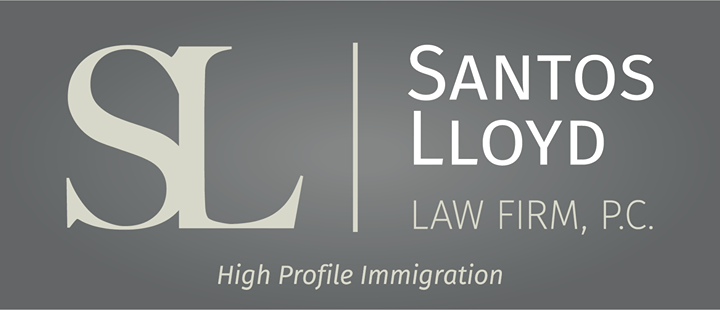¿Cuáles son las dos formas en que puede solicitar asilo?
April Perez • February 17, 2023
Click here to read this article in English
El asilo es una solicitud que le permite a una persona permanecer en los Estados Unidos en lugar de ser expulsado o tener que regresar a su país de origen donde teme ser perseguido o sufrir daños. Una solicitud de asilo se puede presentar de dos maneras.
Asilo afirmativo
Una solicitud afirmativa de asilo puede ser presentada por alguien que no está en proceso de deportación (tribunal de inmigración). La persona puede presentar su solicitud y evidencia en la oficina de asilo que corresponda al área donde vive. Una vez que la persona esté programada para una entrevista, la entrevista se llevará a cabo en la oficina de asilo con un oficial de la USCIS. Si la persona tiene un abogado, su abogado también puede estar presente en la entrevista junto con un traductor si es necesario. El solicitante será puesto bajo juramento y el oficial hará preguntas sobre la solicitud para confirmar y actualizar la información en la solicitud. El oficial también hará preguntas sobre la persecución que sufrió el individuo en su país de origen. La decisión se suele dar por correo, o deberá ser recogida en persona por el solicitante en la oficina de asilo en la fecha y hora designada por el oficial. Si el caso es denegado y el solicitante no está en estatus, él o ella será remitido a la corte de inmigración y tendrá la oportunidad de presentar su caso ante el juez de inmigración. Si la persona todavía está en el estado, puede continuar en este.
Asilo defensivo
Una solicitud defensiva de asilo es solicitada por una persona que ya se encuentra en un proceso judicial de deportación o inmigración. La persona ha sido referida a la corte cuando recibió un Aviso de comparecencia, o se entregó en la frontera y solicitó asilo. La solicitud y las pruebas se presentan ante el tribunal y una vez que se programe la audiencia de méritos o la audiencia individual (última audiencia), el solicitante tendrá la oportunidad de declarar sobre la persecución sufrida en su país de origen. El juez dará una decisión al final de la audiencia o emitirá una decisión por escrito que se recibirá por correo en una fecha posterior. Si se niega el caso, el solicitante puede apelar su caso ante la Junta de Apelaciones de Inmigración (BIA), de lo contrario, deberá seguir las instrucciones de la decisión del juez con respecto a su expulsión.
Si cree que puede calificar para asilo, no dude en comunicarse con nuestra oficina.
Este blog no pretende constituir una asesoría legal y nada aquí debe interpretarse como el establecimiento de una relación abogado-cliente. Programe una consulta con un abogado de inmigración antes de tomar acción basándose en cualquier información que lea aquí.
Similar Posts

Under the new regulation, if a person filed or files Form I-589, Application for Asylum and for Withholding of Removal after October 1, 2024, and the application remains pending with USCIS for 365 days, the applicant must pay an Annual Asylum Fee (AAF) on the one-year anniversary of his or her filing date.

As of April 1, 2024, USCIS has instituted an inflation adjustment to immigration application filing fees . These fee increases apply to a majority of the different application types, including family-based, non-immigrant, and immigrant petitions. As a part of these fee increases, USCIS has also instituted a new program designed to provide funding to the United States’ Asylum Program, in order to better address the massive backlog of pending asylum claims currently waiting to be adjudicated. Unfortunately, these changes have led to confusion among petitioners for when they are required to pay the Asylum Program Fee, and when they may qualify for a 50% or complete exemption from the fee. The Asylum Program Fee is required to be submitted by employers in all I-129 and I-140 petitions filed on or after April 1, 2024. The Asylum Program Fee is $600, however, certain exemptions apply . Small employers , defined as having 25 or fewer total employees, qualify for a reduction of the Asylum Program Fee, but are still required to submit a reduced fee of $300. Individual petitioners, or self-petitions, such as in the case of an EB-2 National Interest Waiver, are considered small employers for the purpose of the Asylum Program Fee and are also required to submit the reduced $300 fee. Non-profit organizations are exempted from the Asylum Program fee and are not required to submit any additional funds with the ordinary I-129 or I-140 filing fee. In addition, non-profits qualify for a 50% reduction of the ordinary filing fee in certain types of applications, bringing the overall filing fee burden down substantially for non-profit organizations. With these changes to USCIS’ filing fee schedule, USCIS is hoping for significant improvements to efficiency and processing for pending asylum applicants. If you or your petitioning organization need any assistance in preparing an application for an immigration benefit, including ensuring proper compliance with the new fee requirements, our office is ready and waiting to help!

Once you have connected with a college program, have been admitted to the school, and deemed eligible to compete athletically, you will need to secure an F-1 student visa in order to actually attend your new college and begin your time as a student athlete. The first step in the visa process is to receive your Form I-2

For many talented athletes around the world, U.S. college athletics represent a remarkable opportunity to combine elite athletic competition with higher education. In sports such as basketball, soccer, track and field, and tennis, among others, hundreds of colleges and universities across the United States offer struct

Under the new regulation, if a person filed or files Form I-589, Application for Asylum and for Withholding of Removal after October 1, 2024, and the application remains pending with USCIS for 365 days, the applicant must pay an Annual Asylum Fee (AAF) on the one-year anniversary of his or her filing date.



